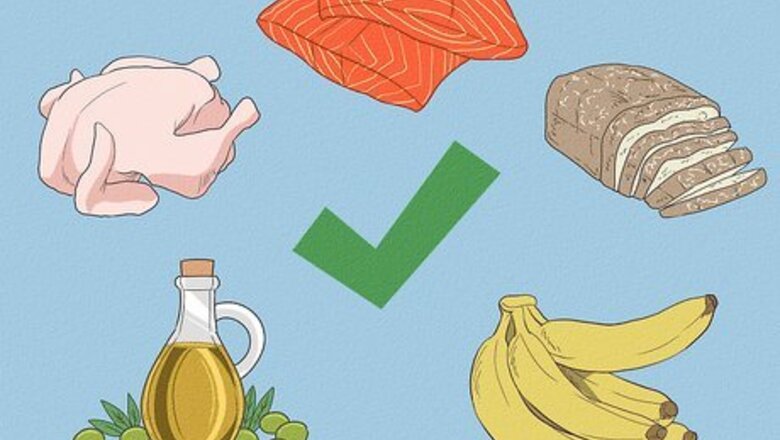
views
X
Trustworthy Source
Harvard Medical School
Harvard Medical School's Educational Site for the Public
Go to source
Changing Your Diet
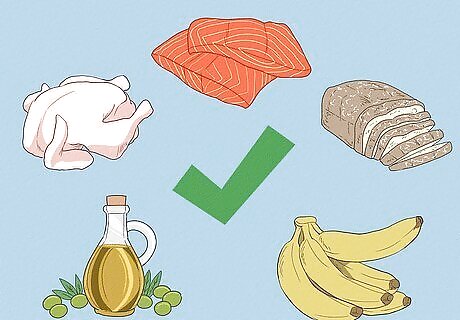
Switch to a Mediterranean diet plan. A Mediterranean diet includes more plant-based meals, small amounts of lean meats, such as chicken and salmon, olive oil, whole grains, and fresh fruits. You can still do a Mediterranean diet if you're cutting carbs since this diet is automatically relatively low-carb. On a Mediterranean diet, limit your consumption of red meat, sweets and other desserts, eggs, butter, and wine. While you don't have to give up any foods that you love, moderation is key. Think of a Mediterranean diet as a different way of eating rather than as a short-term weight-loss regimen. If you go back to eating the foods you were eating before you started eating Mediterranean, you'll likely gain back the weight you lost.
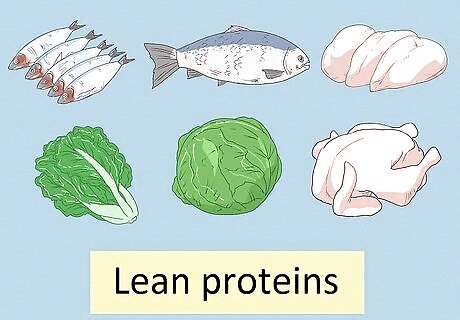
Cut carbs instead of fat to lose weight more quickly. Focus on lean proteins, such as chicken or fish, along with non-starchy vegetables, such as leafy greens. Limit foods that are high in carbohydrates, such as breads, grains, fruits, legumes, and pasta. Check nutritional labels, and keep your carbohydrate intake at around 0.7 to 2 ounces (20 to 60 grams) a day. A low-carb diet helps you lose more fat while also losing less lean muscle tissue than you would on a low-fat diet.
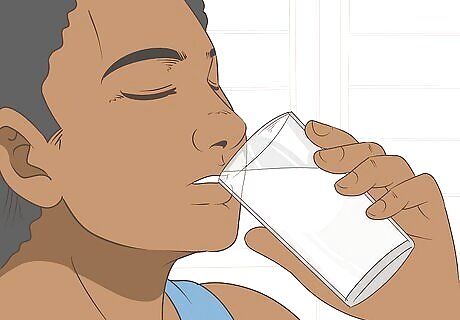
Drink water instead of sugary beverages. The sugar in soft drinks and even fruit juices can increase fat around your midsection. If you normally drink soft drinks or other sugary beverages (even diet versions), switch to water — your waistline will thank you. This doesn't mean you can't have a piece of fruit to satisfy your sweet tooth. When you eat fruit, the fiber in the fruit helps reduce belly fat. However, if you're just drinking the juice, you're not getting any of the fiber — only the sugar. Once you've taken the step to reduce sugar in your beverages, come up with a plan of attack to reduce sugar in your foods. Pastries and candies are obviously high in sugar, but sugar can also come from more unexpected sources. Frozen foods, for example, often have sugar, even if they don't necessarily taste sweet.
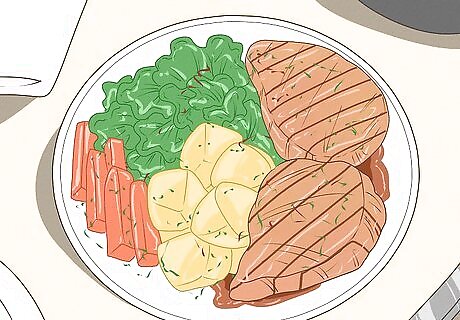
Eat your vegetables first. Regardless of the diet plan you've chosen, you can typically fill up on vegetables without worrying about gaining too much weight. If you eat your vegetables first, you'll end up eating less of the other food on your plate. You can increase this effect by loading your plate with vegetables. Fill at least half of your plate for vegetables. Then include some lean protein, like grilled chicken or salmon. If you're going back for seconds, go for more vegetables rather than anything else.
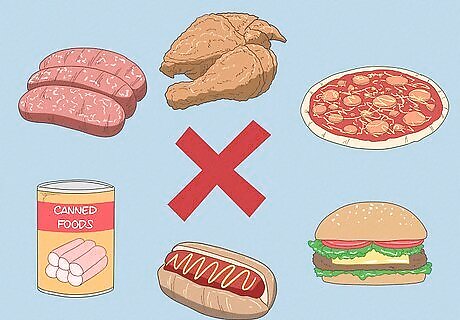
Avoid processed foods and snacks. A frozen dinner may seem like a quick fix for dinner after a long day at work, but frozen meals and other processed foods also have a lot of carbs, fats, and calories that would be missing in the same meal prepared with whole foods. If you don't have time to cook during the week, prep your meals over the weekend and store them in the fridge so all you have to do is heat them up. For snacks, reach for vegetable sticks or a handful of nuts rather than potato chips, cookies, or other prepared snacks that are loaded with calories. In general, try to cut back on sugars and simple carbs and eat more lean protein and healthy fats, as well as a variety of fresh fruits and veggies.

Create a plan that you can stick to long-term. Commit to a healthier way of eating for the rest of your life rather than depriving yourself of the foods that you love. While you might lose weight on a restrictive crash diet, you'll gain it all back as soon as you resume your normal eating habits. Don't think you have to change everything about your eating habits all at once. Make small changes and stick to them until they become habits. Then change something else. For example, if you want to move away from processed foods, you might start with snacks, then move on to meals. If you're intimidated by the prospect of going it alone, you might try a smartphone app that helps you change your diet and approach to eating, such as Noom, Lose It!, or Weight Watchers. These apps typically charge a monthly subscription fee.
Getting Regular Exercise
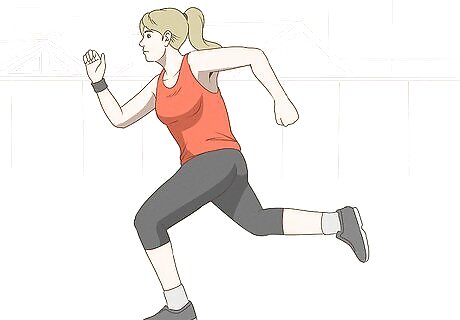
Exercise to lose weight overall rather than targeting your belly. Unfortunately, there aren't specific exercises you can do that will directly shrink your belly. Instead, focus on being more active and healthy to lose weight overall. As you lose weight, some of that will definitely come from your belly — there's just no real way to predict how much. Where you lose and gain weight depends in part on genetics.
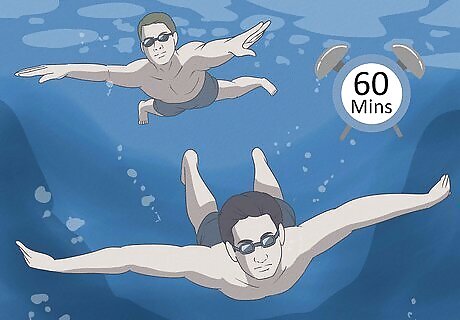
Schedule 30 to 60 minutes of activity every day. Staying active is the key to losing belly fat. For most people, that means engaging in moderate activity for a total of 30-60 minutes per day. Generally, you're moderately active if you can still carry on a conversation while engaging in the activity. A brisk walk is a good example of moderate activity. You could also try swimming or riding a bike. If you want to be active with friends, consider joining a community sports league or going to an exercise class. Exercising with others helps keep you motivated and accountable. You don't have to do the full 30 to 60 minutes all at once. Especially if you're new to exercise, break it up into smaller sessions. For example, you might take a 15-minute walk in the morning and another 15-minute walk in the evening after dinner.
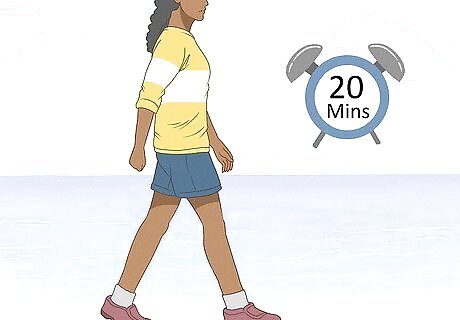
Spend at least 20 minutes each day doing cardio exercise. Cardio exercise gets your blood pumping to strengthen your heart and lungs. Your cardio exercise doesn't have to be vigorous — a brisk walk is sufficient. Walking, in particular, also engages your abs, which can help you burn belly fat more quickly. Once your body gets used to your daily walks, you'll have a hard time going without them. Walking is a good way to get your body used to being more active.
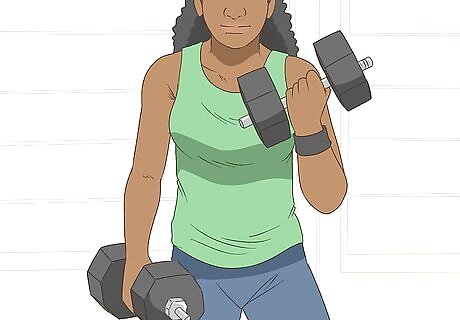
Include strength training to build muscle mass. When you build lean muscle mass, you'll start burning more calories throughout the day, even when you're just sitting on the couch watching TV at the end of a busy day. If you're new to strength training, start with small hand weights and gradually work up to using heavier weights and more resistance Check YouTube for strength training workouts you can try for free. There are also smartphone apps with strength training programs, although you may have to pay a monthly subscription rate to use those. Weight training helps increase your metabolism so you'll burn fat faster. It also strengthens your bones. Over time, as you add muscle, you'll also feel like you have more energy. Lifting heavier weights with less rest time between reps boosts calorie burning after you leave the gym. Core exercises will help tone and strengthen your belly muscles.
Improving Your Lifestyle
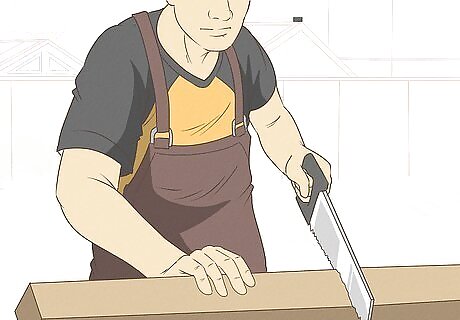
Find an active hobby to take up some of your free time. If your idea of relaxing after a long day is to find something to watch on TV or even curl up with a good book, you're losing time that you could be active. Choose a more active hobby that you enjoy, such as gardening or woodworking. Your "hobby" doesn't even have to be an organized, long-term pursuit. For example, you could learn how to juggle or turn on some music and dance around the living room for a few minutes.
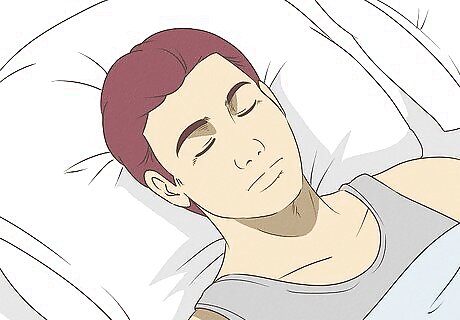
Get at least 7 hours of sleep each night. If you're not well-rested, you're more likely to gain fat — especially around the belly. Being sleep-deprived can also increase your stress levels, another cause of excess fat around the middle. Increasing your physical activity will help you fall asleep faster and sleep more soundly. If you work on developing an active lifestyle, you'll find that your sleep quality improves as well.
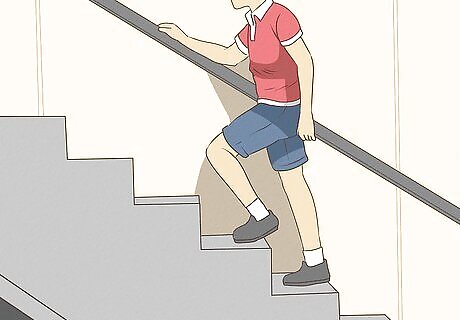
Include physical activity in your daily routine. Even if you have a relatively sedentary job, you can still find ways to be active throughout the day. If you have a choice between doing something in a passive way or doing it in an active way, choose the active way every time. For example, if you could either take an elevator or take the stairs, choose the stairs. It might be difficult at first, but over time, your body will thank you for it. If you're going to a shop, you might also park further away so you can get a little walking in to reach your destination. If a place is within walking distance, consider walking there rather than driving at all.
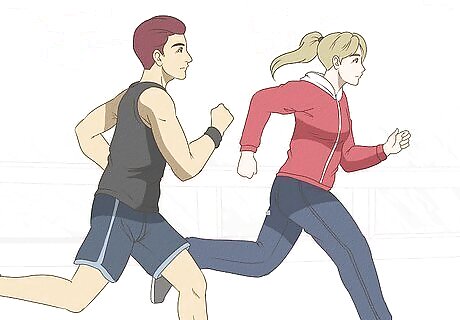
Make friends with other health-focused people. If you have health-focused friends, they can lend you support and help motivate you to reach your goals. You'll also have active people to do things with if you prefer to exercise with others. If most of your current friends aren't very active, consider joining a gym or fitness club to meet other health-minded people. You might also join a community sports league.















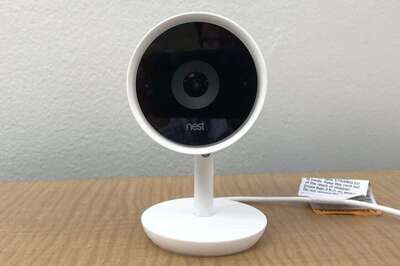



Comments
0 comment